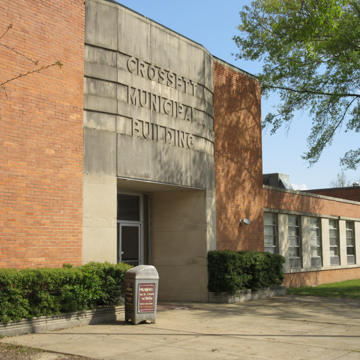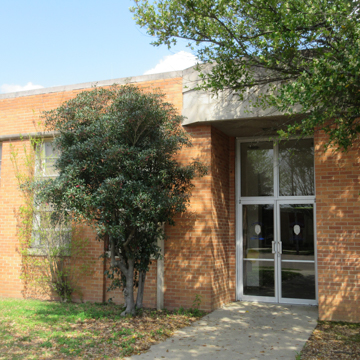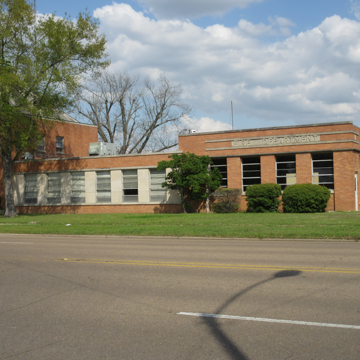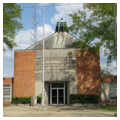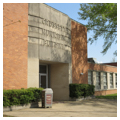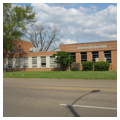Until 1946 almost everything in Crossett had been built and was owned by the Crossett Lumber Company, which had been established in 1899 to harvest the area’s forests. Lumber mills and a Georgia Pacific Plywood factory have a strong presence along the railroad line that runs through the town. This municipal building signifies the town’s post–World War II transition from a company town to an independent city. Constructed by C.W. Vollmer and Company, the mostly one-story building stretches along wide Main Street and features a dominant central section, with a tall pyramid roof crowned by a streamlined copper cupola. The building still houses the municipal offices and courtroom, and its two flat-roofed flanking sections include the fire station on the south and the police station on the north. The brick building’s clean lines, banks of rectangular windows, and simple limestone details emphasizing the building’s horizontality are characteristic of immediate postwar modern design. The interior of the central section has been the least disturbed, and its terrazzo floor, blonde wood paneling, polished granite walls, and pewter light fixtures remain handsome.
One of the three-room houses the lumber company built for its employees has been preserved in the 110-acre Crossett City Park. The wooden house was built before 1910, and its interior is decorated as in the 1930s.
















